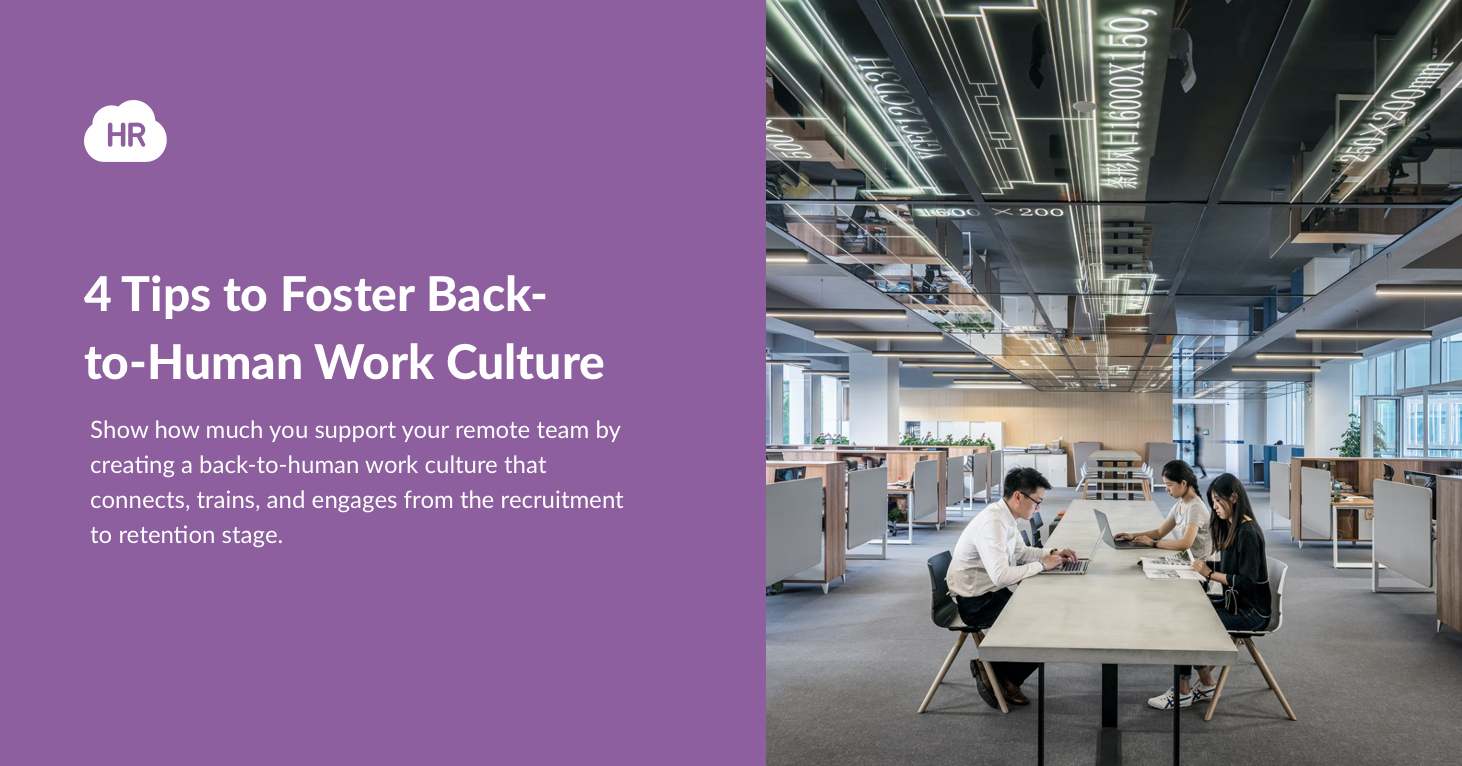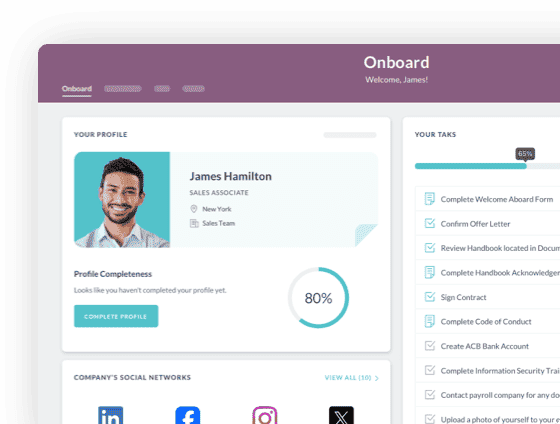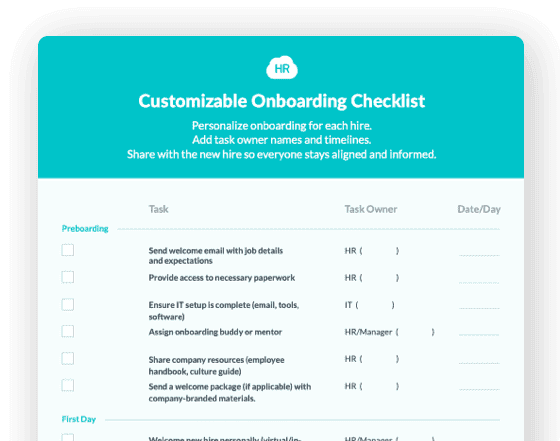4 Tips to Foster Back-to-Human Work Culture



 Cut onboarding time
by 60%—here's the
Ultimate Checklist
that helped do it.
Cut onboarding time
by 60%—here's the
Ultimate Checklist
that helped do it.

When you work remotely, do you feel like you miss out on the social aspect of work? Do you feel like you don't have anyone to talk to during the day?
You're not alone.
Many remote workers feel this way, which can be a significant drawback of working from home. In this blog post, we will discuss ways to make remote work friendlier and more social.
What does a back-to-human work culture mean?
A back-to-human work culture means putting people first. It means valuing employees as individuals and giving them the time, space, and respect they need to do their best work.
It also means creating a positive workplace culture where people feel comfortable taking risks, making mistakes, and learning from their experiences. Back-to-human work culture is where employees feel valued and supported, not micro-managed or bogged down by bureaucracy.
Furthermore, at its heart, back-to-human work culture is about building relationships and creating a sense of community in the workplace. When employees are happier and more engaged, they're more productive and creative.
The biggest challenges of remote work
While remote work has many benefits, some challenges also come with it.
Flexible schedules and overworking
One of the biggest challenges for remote workers is creating a flexible schedule that works for them. It's important to find a good work-life balance between working enough hours to stay productive and taking time off to relax and rejuvenate. It can be tough to stick to this balance, but it's definitely worth trying to find something that works for you.
After all, it depends on the individual and their work preferences. Some people love the freedom of remote work and can get a lot done without feeling overwhelmed by a traditional office setting. Others find it hard to stay focused when working from home and may benefit from a more flexible schedule that allows them to take short breaks during the day or work different hours each day.
The key is to find what works best for you and your productivity levels and then communicate that preference to your supervisor or team. It's also crucial to be proactive about managing deadlines and ensuring that all assigned tasks are completed in time, regardless of where you're working from.
Lack of contact
The lack of contact is the biggest challenge of remote work because it's tough to stay connected with team members when you're not physically together. This can lead to a lack of communication which can impact productivity and project deadlines.
There are a few reasons why lack of contact can be the biggest challenge of remote work. First, remote workers can often feel isolated and disconnected from their team. This can prompt feelings of loneliness and boredom, which can impact productivity and motivation.
Second, it can be difficult to build trust and collaborate effectively with remote teammates without regular contact.
And finally, lack of communication can induce misunderstandings and frustrations that can damage relationships.
Some ways to overcome this challenge include using video conferencing tools like Slack, Skype, or Zoom, scheduling regular check-ins, and setting up team-building activities like virtual happy hours. By staying connected both electronically and emotionally, it encourages your remote employees to stay productive and cohesive.
Asynchronous communication
Asynchronous communication could generate some issues for remote workers. For example, it can be difficult to "read the tone" of a message when you can't see the person's facial expressions or hear the inflection in their voice. This often causes misinterpretations and misunderstandings, or could make constructive feedback sound like a mockery.
Next, it can be difficult to stay on top of all of your asynchronous communication channels when you're working on projects that require your full attention. Messages can get buried in inboxes, notifications can pile up, and before you know it, you've missed an important conversation.
Finally, asynchronous communication often takes longer than face-to-face or real-time communication. This is because, usually, there's more back-and-forth involved, and people can't get immediate feedback. If this is ignored for too long, it can delay decision-making and project progress.
The best ways to foster a back-to-human work culture
Improved onboarding with a buddy program and game nights
A buddy program can be a great way to help new employees feel welcomed and comfortable in their new role, and game nights are always a fun way to bond with coworkers. Plus, it's a great way to get to know each other better, build camaraderie in the workplace, and encourage collaboration.
Buddy programs and game nights are great for improving onboarding. They help break the ice and make the new employee feel welcome and, at the same time, help them learn about the company culture and get to know their coworkers. Additionally, these activities help employees bond with one another, leading to increased productivity and create a more positive work environment.
Improved training, learning and development opportunities
Employees who feel valued and supported are more likely to be productive and engaged in their work. By providing training and learning opportunities, you show your employees that you care about their development and invest in their future.
Training and learning opportunities are essential for two reasons. First, they help employees stay up-to-date on the latest trends and technologies. Second, they show employees that you support their development, which can increase engagement and motivation. You can even make training as a reward for excellent performance, for example, if the company reaches 100 employees, a leadership training will be provided.
Improved recruitment that sells a career path
One of the primary reasons why employees change companies is that today's jobs offer a paycheck and a role while not thinking about long-term career prospects. Your candidates are no longer looking for roles that will have them sitting in the same position for years without any professional development.
Before you put out a new opening, think carefully about the career progression for that role in the upcoming year or two. Where will your company be, and what are your plans? What should this person achieve in a year or two? What skill sets do this role needs?
Think about each of your open roles and develop a career progression plan for each. Having one will attract better candidates and give your employees a sense of purpose. Add to these specific goals for advancing to the next role, and you'll have an army of motivated employees yearning for professional growth.
Improved employee engagement through different activities
Just because you work remotely, it doesn't mean that you can't do any team-building activities on a regular basis. In fact, there are plenty of activities that you can try out that don't require lots of effort or resources.
One of them is a group activity called campfires - where your team can get together and listen to one employee talk about something they're passionate about. The rest of the team listens, asks or questions.
You can also watch a movie or a TV show with your teammates. From simple apps such as Skype or Zoom to specifically tailored apps like Gaze, watching something together with your remote team has never been easier.
Another neat activity is called an icebreaker - where you ask an interesting question at the beginning of a meeting to get to know everyone better. For example, what was your dream career when you were little? Is there an animal that you're afraid of?
As remote work becomes more common, new tools, apps, and games are being launched every day. Try out some and find something that your team love.
Conclusion
The best way to make remote work friendlier is by focusing on the human element. This can be done through improved onboarding, training, and recruitment practices that sell a career path and development opportunities. Additionally, creating a culture of connection and engagement through activities like virtual game nights can help to generate a more cohesive team, improve leadership skill, and promote sense of belonging. In the bigger picture, creating a back-to-human work place will improve your company’s score card.
About author: Raisa Yogiaman is a content marketer at Zavvy - an employee enablement platform that combines employee experience with smart workflow automation.
Keep Reading
How HR Cloud Is Shaping the Future of HR in Senior Care
At the 2025 LeadingAge Annual Meeting in Boston, one conversation is taking centerstage —
Top 10 Best Employee Engagement Software
An employee engagement platform acts as a hub for the daily or other periodic rituals of
How to Improve Employee Engagement in Healthcare: 9 Simple Things to Start Doing Today
Improving employee engagement in healthcare teams directly impacts the level of care
Like What You Hear?
We'd love to chat with you more about how HR Cloud® can support your business's HR needs. Book Your Free Demo

Build a Culture of Recognition. Boost Engagement. Guaranteed.
Workmates empowers employees to stay informed, connected, and appreciated—whether they’re on the front line, in the office, or remote. Recognition drives 12x higher engagement.Trusted by industry leaders in every sector




Cut Onboarding Costs by 60%.
Take the confusion and follow-ups out of onboarding with automated workflows, digital forms, and structured portals—so new hires ramp faster 3X quicker.Trusted by industry leaders in every sector




